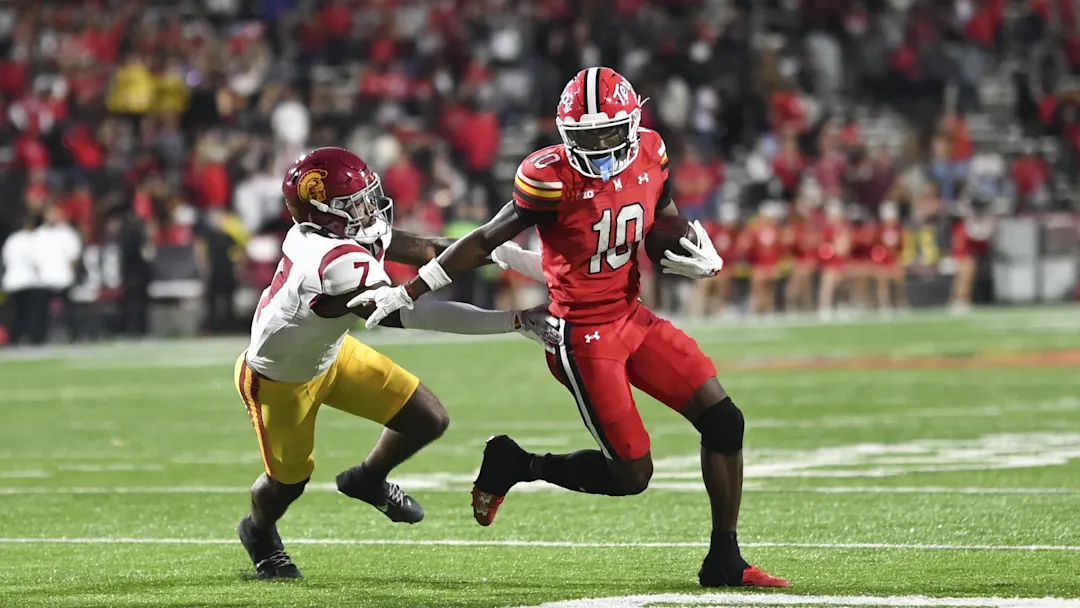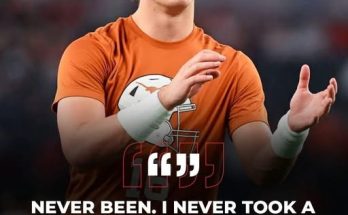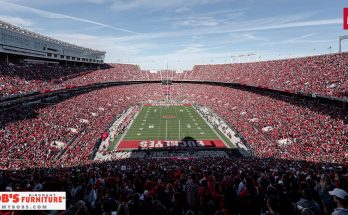The NFL Draft is a time for hope, for speculation, and, most of all, for projections. And when those projections come from the likes of ESPN, fans pay attention. This week, ESPN turned its attention to former Maryland wide receiver Tai Felton, forecasting his potential production with the Minnesota Vikings in what could be a promising rookie campaign. For Vikings fans and NFL analysts alike, the takeaway is clear: Felton may not just be another name on the roster—he could be an immediate contributor.
Selected by Minnesota in the later rounds, Felton’s name might have flown under the radar during the buildup to the draft, overshadowed by flashier first-round picks and high-profile trades. But if ESPN’s analytics are correct, he might not stay under the radar for long. The projections indicate that Felton could become a key piece in the Vikings’ passing game from Week 1, benefitting from a combination of scheme fit, positional opportunity, and a skill set that has quietly impressed scouts since his final season in College Park.
Felton’s senior year at Maryland didn’t necessarily place him at the top of national leaderboards, but it did highlight his growth, consistency, and knack for making plays when it mattered. He finished the 2023 season with 723 receiving yards on 41 catches, averaging nearly 18 yards per reception. That kind of explosive potential is difficult to ignore, especially for a team like the Vikings, who are looking to retool their offense and build around a young core following the departure of veteran quarterback Kirk Cousins.
Minnesota’s decision to draft Felton was no accident. With Justin Jefferson firmly entrenched as the WR1 and Jordan Addison continuing to develop in his second year, the Vikings had been seeking a reliable third option—someone with speed, route-running polish, and the ability to stretch the field vertically. Felton checks all those boxes. His 4.39-second 40-yard dash at Maryland’s Pro Day turned heads, and his film backs it up. He’s a legitimate deep threat, but he’s also more than that. Felton has shown improvement in his intermediate routes, toughness after the catch, and a willingness to contribute in blocking assignments, traits that should endear him to head coach Kevin O’Connell and the offensive staff.
ESPN’s projection system takes into account multiple variables—college production, combine metrics, team depth charts, offensive systems, and historical trends for players in similar roles. According to the network’s analytics, Felton is projected to finish his rookie season with approximately 42 receptions for 610 yards and four touchdowns. While those numbers may not scream Rookie of the Year, they’re strong for a mid-round receiver entering a competitive offense and adjusting to the NFL level. In fact, those projected totals would put Felton in the top tier of rookie receivers not selected in the first two rounds.
What’s most encouraging for Vikings fans, however, isn’t just the numbers—it’s the trajectory. ESPN’s model also suggests that Felton’s usage will steadily increase as the season progresses. With a rookie quarterback likely to start at some point—whether that’s J.J. McCarthy or a surprise camp standout—there’s an expectation that Felton’s chemistry with the young signal-caller could become a major storyline in the second half of the season. In college, Felton thrived in broken plays and scramble drills, often finding soft spots in zone defenses and creating separation late in routes. That kind of improvisational skill is invaluable for a quarterback still learning to process NFL defenses in real time.
One of the more intriguing factors in Felton’s projected success is the Vikings’ evolving offensive identity. Kevin O’Connell’s system is predicated on timing, spacing, and layered route concepts—principles that reward receivers with intelligence and discipline. Felton’s time at Maryland in Mike Locksley’s system gave him a strong foundation in pro-style concepts, and by all accounts, he’s been a quick study in Minnesota’s playbook. Early OTA reports suggest that Felton has already been spending extra time with position coaches and quarterbacks, working on route timing and catch-point reliability. The coaching staff has praised his attention to detail and competitive mindset—two traits that can make or break a rookie’s transition to the pros.
Another aspect that boosts Felton’s outlook is the potential for special teams contribution. While ESPN’s forecast focused on offensive output, team insiders have hinted that Felton could also make his mark as a return man. At Maryland, he occasionally flashed in the return game, showcasing vision, acceleration, and toughness. If he earns those reps in Minnesota, he’ll have even more opportunities to impress and solidify his spot on the active game-day roster. Roster versatility is always a plus, especially for a rookie trying to carve out a role.
Of course, every projection comes with its fair share of uncertainty. The Vikings’ offense remains a work in progress. With Cousins gone and the team committed to developing its future under center, growing pains are inevitable. But that transitional phase might actually work in Felton’s favor. In many ways, this is a perfect situation for a rookie looking to break through. The offensive system has room for creativity. The receiver room, while talented, is not overly crowded. And the coaching staff is known for trusting young players who show they can handle responsibility.
Former players and analysts have also weighed in on Felton’s fit. ESPN’s Dan Orlovsky noted that Felton’s style reminds him of former Rams receiver Brandin Cooks during his early years—undersized but fast, technical, and highly productive in the right system. “He’s a guy who doesn’t need 10 targets to make an impact,” Orlovsky said on a recent segment. “Give him five or six touches, and he’ll turn one into a 40-yard gain.” That kind of efficiency could prove vital for a Minnesota offense that will need to find chunk plays without putting too much pressure on a young quarterback.
Felton also enters the NFL with something to prove, a quality that tends to drive success among mid- and late-round picks. Coming out of high school as a three-star recruit, he wasn’t heavily hyped. He worked his way up at Maryland, often operating in the shadow of more heralded teammates. But he steadily improved each season, culminating in a senior year that forced scouts to take notice. Now, with a fresh opportunity in Minnesota, Felton finds himself once again in a position to outperform expectations.
If he does, the Vikings could find themselves with one of the draft’s biggest steals. Production from young receivers is critical in today’s NFL, where salary cap constraints and injury volatility require teams to hit on their draft picks. Felton’s projected numbers—while modest in a vacuum—represent potential long-term value for Minnesota. If he becomes a reliable WR3 or even a WR2 down the line, the pick will be seen as a resounding success.
Ultimately, ESPN’s prediction is just that—a projection. But it’s a projection rooted in data, film study, and historical precedent. And when those factors align with what fans and coaches are seeing on the field, the buzz becomes more than just offseason hype. Tai Felton has the tools, the opportunity, and now, the attention. If he capitalizes, he could become one of the surprise rookies of the 2025 season—not just a contributor, but a true difference-maker for a team searching for its next great offensive weapon.
As training camp approaches, all eyes will be on the Vikings’ receiving corps. Jefferson will draw double teams. Addison will be expected to take the next step. And in that shifting landscape, Felton could quietly build a role that’s both sustainable and significant. ESPN’s forecast may have sparked the conversation, but the rest will be up to Felton—and if his past is any indication, he’s more than ready for the challenge.


